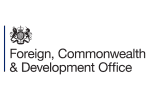[Photo: ADNCUBA]
Despite Cuba’s Central Bank denying rumours on timing, there are growing indications that Cuba may be close to announcing plans for the unification of its economically distorting dual currency system which has been in place since 2004.
On 10 September, the Central Bank issued a statement denying widespread social media posts indicating that the unification of its two legal currencies will take place on 1 October.
The statement added that when such measures are to be adopted the decision will be communicated in good time through official channels. Monetary unification, the Bank said, will not affect the cash in the possession of Cubans, nor the balances of they hold in their bank accounts.
The Central Bank’s statement came on the same day that Reuters reported that Cuba is planning a quick one-to-one devaluation of the domestic peso against the US dollar.
The news agency said that as a part of monetary reforms ‘planned before the end of the year’, the Cuban authorities
will unify the two currencies (the domestic peso, the CUP, and the convertible peso, the CUC) circulating in Cuba.
Quoting two unnamed local sources and a foreign businessman with knowledge of the plan, Reuters indicated that the domestic peso will be retained and the CUC, which is at par with the US dollar, will be eliminated. At present, state enterprises use a buy rate for the CUP to the CUC of 24 and a sell rate of 25.
The eventual rate at which two currencies are unified and how the process of implementation will work are still unknown.
However, in August two lengthy discursive articles appeared in state media explaining why the dual currency system is distorting Cuba’s economy, the complex issues government is trying to address, and the likely effects of unification on exports, imports and prices.
One appearing in late August in Cubadebate quoted President Díaz-Canel’s comments to the Council of Ministers about the urgent need to “immediately correct all possible distortions”. The article noted his focus on concluding the process of monetary and exchange unification rapidly in order “to remove almost all of the obstacles that we have today for the development of the productive forces in our country ”. It also noted his earlier commitment to complete the analysis of monetary and exchange unification and “to approve it in the shortest possible time” and implement it “in its entirety” (See Cuba Briefing 6 January 2020) .
Cubadebate went on to note that the impact of the pandemic had made clear that exporting had become a necessity and, for this to occur, it was essential to continue ‘untying old obstacles’ such as exchange rate duality which, it said, had hindered Cuba’s business system.
The online platform then went on to report the views of Lazaro Toirac, Advisor to the Ministry of Economy and Planning. Noting that although current conditions made unification a challenge, Toirac told Cubadebate that Cuba cannot advance with obsolete instruments and required an economy that sends us the correct signals, whether good or bad. The equivalence of the Cuban peso with the dollar, he said, had obscured the profitability of companies, effectively subsidised unprofitable companies and discouraged exports.
Toirac told the publication that once the expected ‘day zero’ arrives and the Cuban peso is devalued, exporters will receive the corresponding incentives, while importers will see purchases become more expensive causing them to “turn to the domestic economy.”
He also suggested that the objective will be “to try to bring it (the CUP) closer to an exchange rate that can be recognised in its comparison with (value against) international currencies, so that there is clarity in transactions”.
Noting however that this will cause the cost of production to rise, and with it the prices of goods and services, he said that the solution would either be to subsidise the prices that rise as a result of increased costs, or to raise incomes and pensions.
The latter course of action is thought to be more likely if as some analysts believe that the final CUP to US Dollar rate is set at somewhere between CUP5 and CUP10. The Cuban government has consistently said that it will work to ensure that CUP dependent Cubans and pensioners are not left behind by the process of economic restructuring.
The Caribbean Council is able to provide further detail about all of the stories in Cuba Briefing. If you would like a more detailed insight into any of the content of today’s issue, please get in touch





